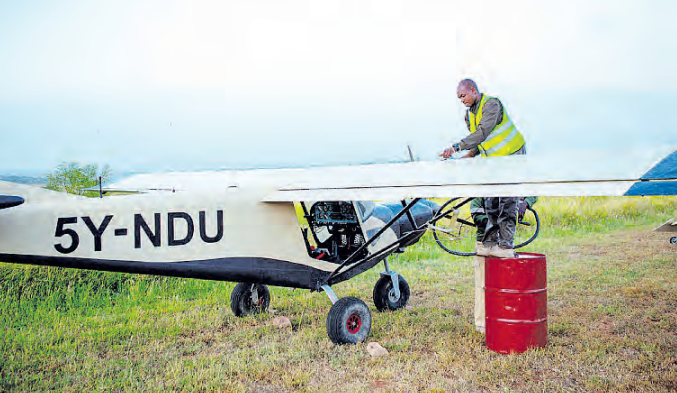
Eleven light aircrafts roared into the sky on Monday with one role — to undertake aerial total wildlife census within the Tsavo ecosystem.
On board were pilots, and rear and front-seat observers.
To the officials, every flight matters as it establishes the health of the iconic ecosystem.
Wildlife Research and Training Institute Kenya director Dr Patrick Omondi said the ongoing aerial census is crucial in shaping conservation strategies for the Tsavo ecosystem, which recorded 14,964 elephants according to the 2021 census.
Omondi said the Tsavo Ecosystem is a key wildlife hotspot for the country with the largest contiguous protected wildlife area including Tsavo East and West and Chyulu National Parks and South Kitui National Reserve measuring over 23,000-kilometre square.
“The ecosystem has the highest elephant population of 14,879animals as per the 2021 National Wildlife Status Report. It adjoins important wildlife conservation regions Taita, Galana and Kulalu Ranches increasing the total area to greater than 40,000 km2,” Omondi said.
The census aims to provide accurate data on the distribution and population of key wildlife species across the expansive Tsavo landscape.
To ensure meticulous data collection and monitoring, the team is targeting to cover 41,000 square kilometres and has divided the area into 77 blocks.
Ahead of the census, WRTI conducted a briefing session for the coordinators, flight teams, ground teams and support teams.
The session, held at Taita Hills Safari Resort and Spa, which serves as the Data Centre, focused on census protocols to ensure accuracy and consistency in data collection for the vital exercise that will inform the status of wildlife populations in the ecosystem.
The teams were taken through flight safety procedures; species identification and counting techniques; data recording and verification to enhance reliability and communication protocols between ground and aerial teams.
It is expected that the ongoing census will take eight days. Omondi said Tsavo is home to an array of wildlife species such as black rhinos and hirolas, which face relentless threats from habitat loss and degradation, climate change, poaching and human-wildlife conflicts.
He said in order to conserve and
sustain the species, there is need
for a robust data to drive informed
policy and management decisions to
support conservation.











